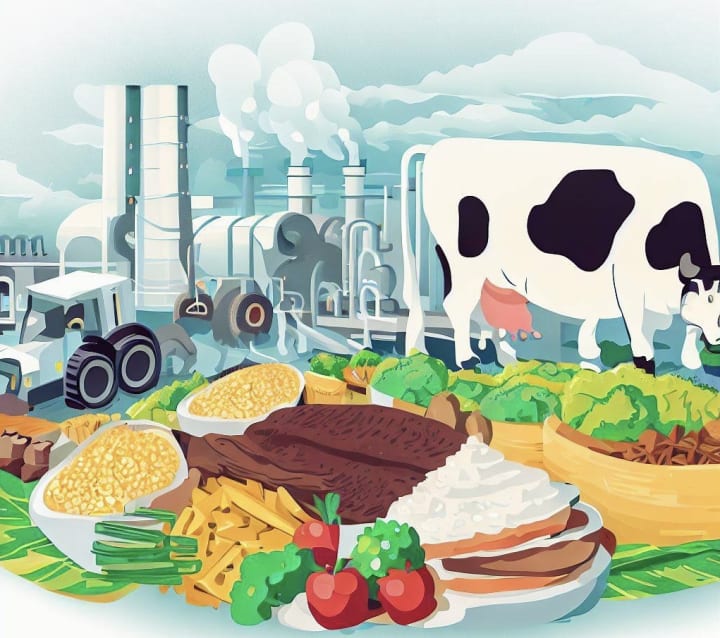Climate-Friendly Dining: The Growing Trend of the Low Carbon Footprint Diet
Climate-Friendly Dining: The Game-Changing Diet You Never Knew Could Save the World!

As awareness about climate change continues to increase, many people are seeking ways to reduce their carbon footprint. One such approach that is growing in popularity is the concept of a low carbon footprint diet, or climate-friendly dining. The aim is to make food choices that result in less greenhouse gas (GHG) emissions, thus decreasing one's contribution to climate change.
Food production and consumption significantly contribute to global GHG emissions, including the significant amounts of methane produced by livestock, nitrous oxide emissions from agricultural soils, and carbon dioxide emissions from food transport and processing. Research suggests that diet shifts could potentially reduce food-related emissions by up to 70%.

The first step towards adopting a low carbon footprint diet is understanding the carbon cost of different foods. In general, plant-based foods have a lower carbon footprint than animal-based foods. Ruminant meat, such as beef and lamb, has the highest carbon footprint due to the methane produced by these animals and the resources used in their raising and processing. In contrast, foods like vegetables, grains, and legumes have a much lower carbon footprint, as they require less energy to produce and are often less damaging to the environment.
However, the carbon footprint of a food product is not solely determined by its type but also by factors such as production methods, transportation, and packaging. For example, a locally sourced vegetable can have a smaller carbon footprint than an imported one, even after taking into account the difference in emissions from agricultural practices. Similarly, foods that are highly processed or heavily packaged also tend to have higher carbon footprints.

Eating seasonally is another aspect of climate-friendly dining. Foods grown in their natural season usually require less energy-intensive practices like heated greenhouses or long-distance shipping, thus reducing their carbon footprint. In addition, seasonal foods often taste better and contain more nutrients.
Reducing food waste is also crucial for a low carbon footprint diet. When we waste food, all the resources used in its production, transportation, and disposal are wasted too, contributing to unnecessary GHG emissions. Simple actions such as planning meals, using leftovers, and properly storing food can make a big difference.
A growing number of consumers are adopting these practices, but the shift towards climate-friendly dining is not just happening at the individual level. Many restaurants and food businesses are also embracing the trend. Some are offering menus based on seasonal and locally sourced ingredients, others are promoting plant-based options or adopting sustainable packaging and waste management practices. These initiatives not only help reduce the carbon footprint of the food served but also raise awareness about the importance of sustainable eating.
However, it's important to remember that a low carbon footprint diet doesn't mean giving up all high-carbon foods entirely. Rather, it's about making more climate-friendly choices on a regular basis. For example, one could choose to reduce meat consumption, opt for locally sourced products when possible, and avoid food waste. These small changes can add up and make a significant difference.
While the potential environmental benefits of a low carbon footprint diet are clear, there are also many health benefits associated with such a diet. Many plant-based foods are high in fiber and nutrients, and diets rich in these foods have been linked to lower risks of diseases like obesity, heart disease, and type 2 diabetes. Thus, a climate-friendly diet can be good for both the planet and the people.

In conclusion, the growing trend of climate-friendly dining represents a positive step towards mitigating the impacts of climate change. By adopting a low carbon footprint diet, we can make a significant contribution to reducing GHG emissions while also enjoying tasty, nutritious food. With continued awareness and education, this trend can continue to grow and have a meaningful impact on our planet's future.






Comments
There are no comments for this story
Be the first to respond and start the conversation.